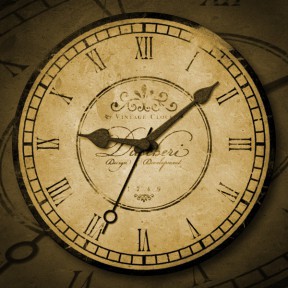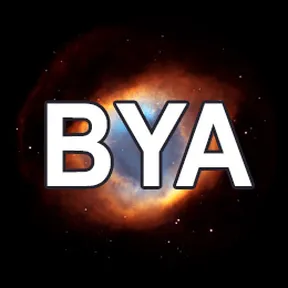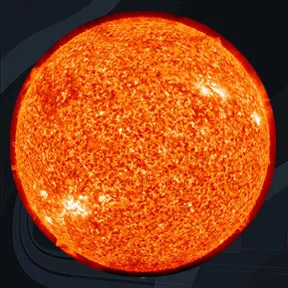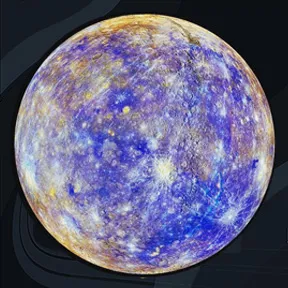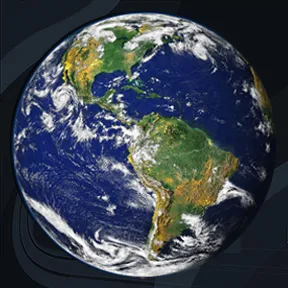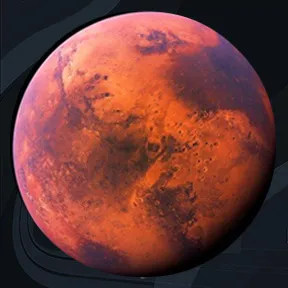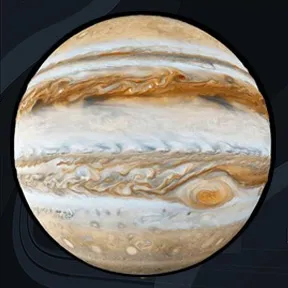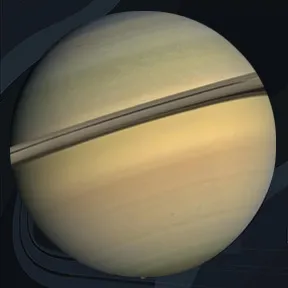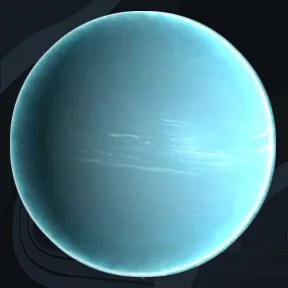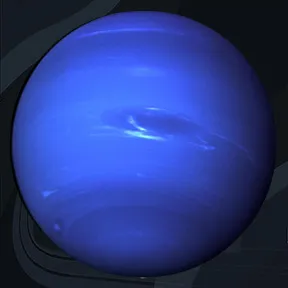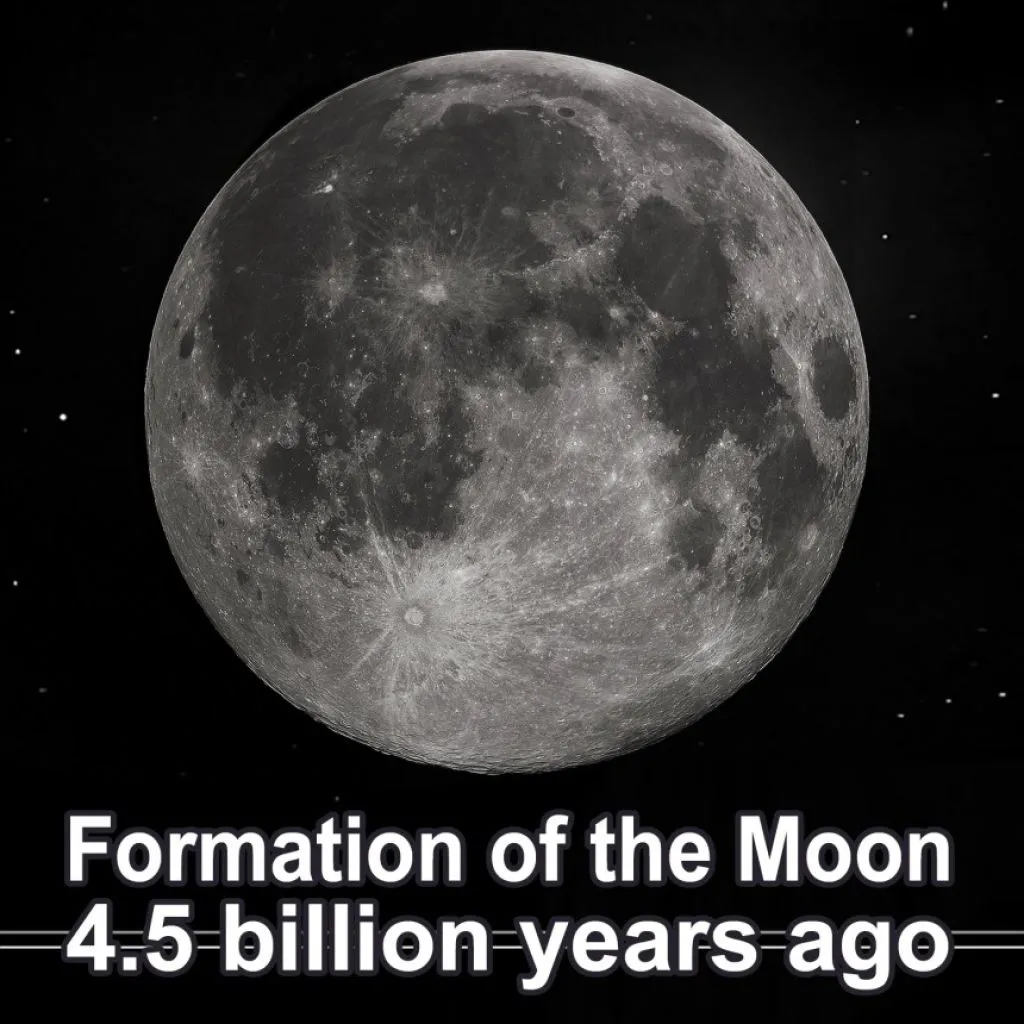
Formation of the Moon
The Moon (Latin: Luna) is Earth's only natural satellite and the fifth largest natural satellite in the Solar System.
The average centre-to-centre distance from the Earth to the Moon is 384,403 km, about thirty times the diameter of the Earth.
The Moon's diameter is 3,474 km, a little more than a quarter that of the Earth.
This means that the Moon's volume is about 2 percent that of Earth and the pull of gravity at its surface about 17 percent that of the Earth.
The Moon makes a complete orbit around the Earth every 27.3 days (the orbital period), and the periodic variations in the geometry of the Earth–Moon–Sun system are responsible for the lunar phases that repeat every 29.5 days (the synodic period).
The Moon is the only celestial body to which humans have travelled and upon which humans have landed.
The first artificial object to escape Earth's gravity and pass near the Moon was the Soviet Union's Luna 1, the first artificial object to impact the lunar surface was Luna 2, and the first photographs of the normally occluded far side of the Moon were made by Luna 3, all in 1959.
The first spacecraft to perform a successful lunar soft landing was Luna 9, and the first unmanned vehicle to orbit the Moon was Luna 10, both in 1966. The United States (U.S.) Apollo program achieved the only manned missions to date, resulting in six landings between 1969 and 1972.
Human exploration of the Moon ceased with the conclusion of the Apollo program, although several countries have announced plans to send people or robotic spacecraft to the Moon.
NAME AND ETYMOLOGY
Unlike the moons of other planets, the moon of the Earth has no proper English name other than "the Moon" (capitalized).
The word moon is a Germanic word, related to Latin mensis (month); it is ultimately a derivative of the Proto-Indo-European root me-, also represented in measure (time), with reminders of its importance in measuring time in words derived from it like Monday, month and menstrual.
In English, the word moon exclusively meant "the Moon" until 1665, when it was extended to refer to the recently-discovered natural satellites of other planets.
The Moon is occasionally referred to by its Latin name, Luna, in order to distinguish it from other natural satellites, with a related adjective lunar, and an adjectival prefix seleno- or suffix -selene (from the Greek deity Selene).
TWO SIDES OF THE MOON
The Moon is in synchronous rotation, meaning that it keeps nearly the same face turned towards the Earth at all times.
Early in the Moon's history, its rotation slowed and became locked in this configuration as a result of frictional effects associated with tidal deformations caused by the Earth.
ORIGIN AND GEOLOGIC EVOLUTION/ FORMATION
Several mechanisms have been suggested for the Moon's formation. The formation of the Moon is believed to have occurred 4.527 ± 0.010 billion years ago, about 30–50 million years after the origin of the Solar System.
FISSION HYPOTHESIS
Early speculation proposed that the Moon broke off from the Earth's crust because of centrifugal forces, leaving a basin – presumed to be the Pacific Ocean – behind as a scar.
This idea, however, would require too great an initial spin of the Earth; and, even had this been possible, the process should have resulted in the Moon's orbit following Earth's equatorial plane. This is not the case.
CAPTURE HYPOTHESIS
Other speculation has centered on the Moon being formed elsewhere and subsequently being captured by Earth's gravity.
However, the conditions believed necessary for such a mechanism to work, such as an extended atmosphere of the Earth in order to dissipate the energy of the passing Moon, are improbable.
CO-FORMATION HYPOTHESIS
The co-formation hypothesis proposes that the Earth and the Moon formed together at the same time and place from the primordial accretion disk.
The Moon would have formed from material surrounding the proto-Earth, similar to the formation of the planets around the Sun.
Some suggest that this hypothesis fails adequately to explain the depletion of metallic iron in the Moon.
A major deficiency in all these hypotheses is that they cannot readily account for the high angular momentum of the Earth–Moon system.
GIANT IMPACT HYPOTHESIS
The prevailing hypothesis today is that the Earth–Moon system formed as a result of a giant impact.
A Mars-sized body (labelled "Theia") is believed to have hit the proto-Earth, blasting sufficient material into orbit around the proto-Earth to form the Moon through accretion.
As accretion is the process by which all planetary bodies are believed to have formed, giant impacts are thought to have affected most if not all planets.
Computer simulations modelling a giant impact are consistent with measurements of the angular momentum of the Earth–Moon system, as well as the small size of the lunar core.
Unresolved questions regarding this theory concern the determination of the relative sizes of the proto-Earth and Theia and of how much material from these two bodies formed the Moon.
From year to year, the moon never seems to change. Craters and other formations appear to be permanent now, but the moon didn't always look like this. Thanks to NASA's Lunar Reconnaissance Orbiter, we now have a better look at some of the moon's history. Learn more in this video!
This video is public domain and can be downloaded at: http://svs.gsfc.nasa.gov/goto?10930
